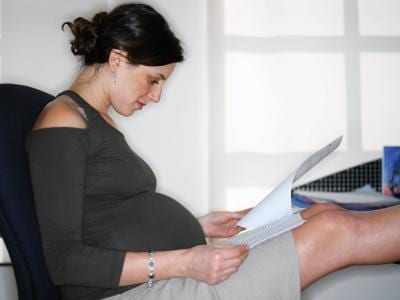Your body goes through many changes while you are pregnant and your skin, in particular, is subject to many problems. You may get that rosy glow on your face, but you might also have to contend with skin complications. Don’t be too dismayed, though, because most of the changes to your skin will go away after you give birth. Doctors don’t really know what causes skin problems in pregnant women, although some think it could be due to hormones.
Dark Areas
More than 90 percent of pregnant women get dark spots on their skin during pregnancy, especially on the areola, nipples and inner thighs. Your body produces more melanin — the substance that gives color to skin and hair — when you’re pregnant.
When dark spots appear around your nose, cheeks and eyes, this is what people call a “pregnancy mask.” About 70 percent of pregnant women get this. Exposure to sunlight makes this problem worse, so use a sunscreen and wear a hat when out in the sun.
Another dark area some pregnant women get is a faint line, called the linea nigra, which runs from the belly button to the pubic area. You’ve always had this line, but it seems to only be visible during pregnancy.
Stretch Marks
Some women get reddish lines on their skin in the areas that stretch during pregnancy. Marks occur when your skin stretches quickly, and by the third trimester, most women have some stretch marks on their belly, butt, thighs or breasts. You really can’t do anything to prevent stretch marks from occurring, but you can use a moisturizer to help keep your skin stay soft. Creams and lotions that claim to prevent or remove stretch marks probably won’t work, according to the American Congress of Obstetricians and Gynecologists. Most stretch marks fade over time.
Acne
Just when you thought your acne was a thing of the past, it may come back full-force during pregnancy. Pregnant women can break out on their face, chest and back. You have more androgen — a male sex hormone — when you are pregnant; Dr. Bruce E. Katz, medical director of the Juva Skin and Laser Center, told WebMD. Oil glands respond to androgen and produce more sebum, which clog your pores.
Spider and Varicose Veins
Spider veins are tiny red veins that some women get on their face, neck and arms in the first half of pregnancy. Spider veins should fade after giving birth.
The extra weight you are carrying in your uterus can cause the veins in your legs to swell, get sore and turn blue. You can prevent this condition, called varicose veins, from getting worse by sitting down more during the day. If you must stand for prolonged periods, move around as much as possible. Don’t cross your legs when you sit; prop them up instead, whenever possible.
Itchy Skin
Some pregnant women feel itchy on their breasts and belly or get itchy palms and feet. If you feel itchy, take warm — not hot — showers, and use a mild soap. Pat your skin dry instead of rubbing it. Use a moisturizer immediately when your skin is still damp. Wear loose, cotton clothing and stay indoors in the summer during the hottest part of the day.
One in 200 women get pruitic urticarial papules and plaques of pregnancy, which are small, red bumps that can form into large, itchy patches. This condition usually starts on the belly and can spread to the butt, thighs or breasts.
Prurigo of pregnancy are itchy bumps that resemble insect bites and can appear anywhere on your skin. Your doctor can treat this condition with medicine.
A rare skin condition called pemphigoid gestationis causes blisters on a pregnant woman’s abdomen. Your doctor can help you treat this condition with medication. You can also take an oatmeal bath for relief.





